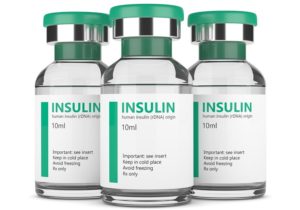340B Provides Better Access to Diabetes Treatment
by Admin | November 26, 2019 5:10 pm

November 26, 2019– Public attention has increased in recent months to a health access challenge that 340B hospitals have been aware of for years. Many patients with diabetes are struggling to afford the cost of insulin and other expensive treatments they need to manage the disease and stay healthy. But with the help of 340B, many safety-net hospitals are doing great work to combat this trend.
November is American Diabetes Month, a time dedicated to reflecting on the challenges and opportunities for people living with the disease. According to the American Diabetes Association[1], more than 30 million Americans, or 9.4 percent of the U.S. population, had diabetes in 2015. Nearly 1.5 million people are diagnosed with the disease every year. Diabetes is the seventh leading cause of death in the U.S.
340B hospitals focus a great deal of attention on providing care for people living with diabetes to help them remain healthy. Successful disease management saves lives and avoids serious associated complications such as cardiovascular and kidney conditions as well as permanent eye and foot damage.
One reason 340B hospitals are so familiar with diabetes is because the patients they care for tend to be at higher risk for the disease. A 340B Health report from earlier this year, for instance, found the percentage of black/African American patients treated in 340B hospitals is 66 percent higher than in non-340B hospitals. African Americans are almost twice as likely to be diagnosed with diabetes as non-Hispanic whites, according to figures[2] from the U.S. Dept. of Health and Human Services.
Additionally, 340B hospitals’ missions to treat typically underserved patients mean they have an average low-income patient load of 41.8 percent, compared with 27.2 percent for non-340B hospitals, according to another 340B Health report[3]. Patients with low incomes also are at higher risk for diabetes due to a variety of factors known as social determinants of health. These include a lack of access to nutritious food and fewer opportunities to exercise.
Challenges and Successes
When patients living with diabetes encounter access problems, the results can be serious. The cost of treatment has risen sharply, with the cost of insulin having tripled since 2002. The price tag increased 64 percent between 2014 and 2019 alone. The diabetes advocacy group T1 International released a recent survey[4] concluding that more than 25 percent of Type 1 diabetes patients in the U.S. are rationing their insulin to save money. In the most tragic cases, patients have died.
When 340B hospitals intervene to help boost access, the results can be very rewarding. Hospitals improve access to care and patient health outcomes by using their 340B savings to provide free or discounted insulin (and other supplies such as syringes) to patients who are uninsured, underinsured, or have low incomes. They also use savings to expand their health care offerings to provide comprehensive, coordinated services to diabetic patients.
Hear These Patient Success Stories
One of the many patients who have benefited from such assistance is Kathleen Cavanagh from Caldwell, Idaho. Kathleen is one of the several patients profiled in our Faces of 340B[5] series. She experienced trouble controlling her diabetes and multiple other health conditions until she started receiving free medications and other comprehensive health assistance through the 340B program at St. Luke’s Humphreys Diabetes Center in Boise. She recently shared with us that thanks to the support, she has remained healthier, cut the number of medications she regularly needs, and stayed out of the hospital.
Similar stories are happening across the country. Jefferson Regional Medical Center in Pine Bluff, Ark., serves a county where more than 40 percent of the residents live on incomes below the federal poverty level. Lelan Stice, the hospital’s director of pharmacy, cardiology, and surgery, notes that these patients are particularly vulnerable to health access challenges related to affordability.
“Insulin has become hyper-expensive, and the market has gone up significantly over the last 10 to 15 years – much more so than most drugs,” Lelan said in his Faces of 340B[6] profile. That’s a big reason why the hospital has used 340B savings to provide heavily discounted insulin to patients with diabetes living on low incomes. Lowering the price of the drug from more than $300 a vial to about $40 a vial makes a major difference for these patients.
The Mission Continues
Much more work remains to be done on combating diabetes rates and addressing high drug costs. But as we contemplate these challenges, we also celebrate the many success stories that safety-net hospitals have made possible.
- American Diabetes Association: https://www.diabetes.org/resources/statistics/statistics-about-diabetes
- figures: https://minorityhealth.hhs.gov/omh/browse.aspx?lvl=4&lvlid=18
- report: https://www.340bhealth.org/files/340B_Report_03132018_FY2015_final.pdf
- survey: https://www.axios.com/type-1-diabetes-rationing-usa-countries-survey-cbd86250-72f5-4177-8929-00ad933a0fcf.html
- Faces of 340B: https://www.340bhealth.org/newsroom/faces-of-340b/kathleen-cavanagh/
- Faces of 340B: https://340binformed.org/2019/09/faces-of-340b-meeting-regional-health-challenges/
Source URL: https://340binformed.org/2019/11/340b-provides-better-access-to-diabetes-treatment/